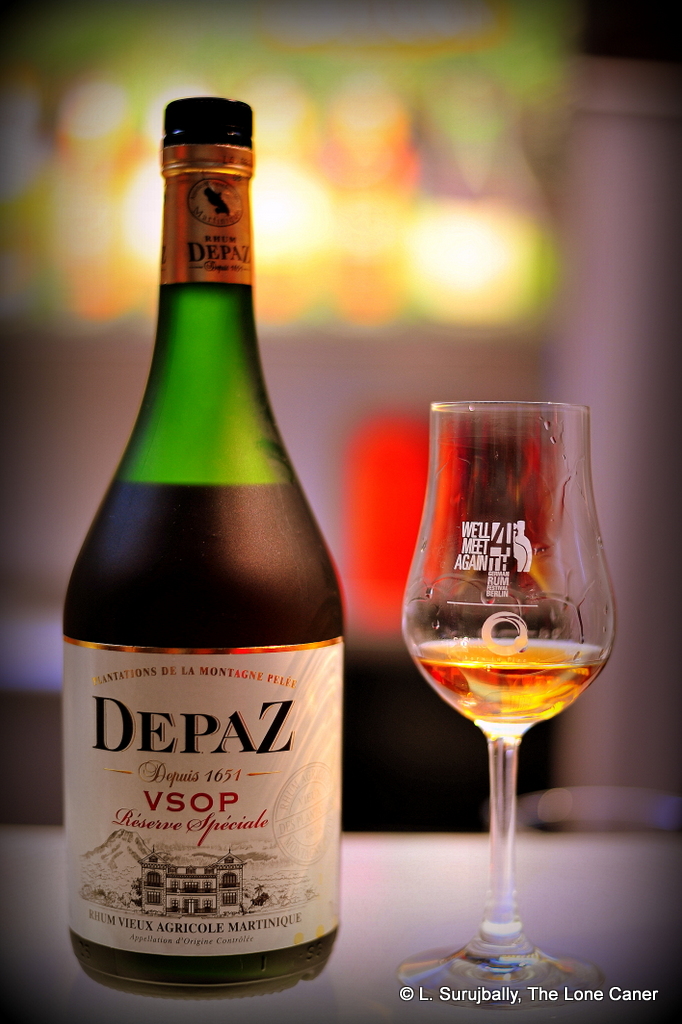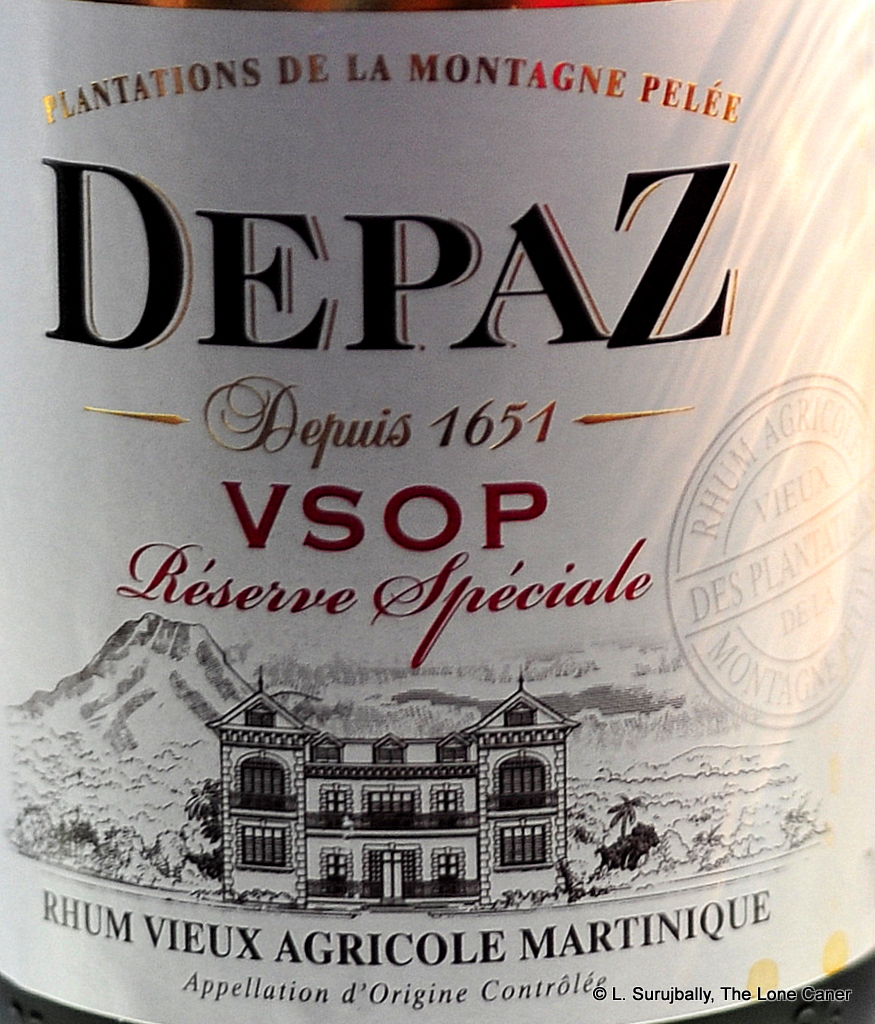
Complex, yes. Quality, not entirely.
Although the Depaz VSOP Reserve Speciale is noted as being a complex agricole, not much except perhaps the taste of the reddish brown rhum deriving from the Plantation de la Montagne Pelee really works for me as it should, which just goes to show that not every single spirit hailing from a part of the world supposedly making only top-end products can be as good as it is meant to be. Part of the issue here (I hesitate to say “problem”) is that all sensations go by too fleetingly for any real impression to be left, and what was there just never came out the way it might have. The Depaz agricole is a Tolkien elf running across the snow, and leaves few footprints worthy of remark.
Which is somewhat odd for a spirit that is bottled at 45%: that strength alone would lead you to assume some intensity and heft in the profile. But nope, not really. At least not in this one, and it starts right away in the nose. Unlike some really stellar exemplars of the craft (think Damoiseau 1980 or even the Karukera Millesime 1997) which wafted a cloud of deep, luscious scents into the room as soon as the bottle was cracked, the Depaz seemed thin and reedy as a hungry rice-eating mongrel’s ribs, and like such a pooch’s snarling attack, it was sharp and fast and over way too quick. There were underlying aromas of grass, crushed cane and rosemary, some subdued hints of apricots, fruits, flowers and sweet bubblegum, followed by faint leather, and the damp musky smell of cheap cigarettes smoked in the midst of a tropical rainforest with high humidity (having done so in the past, I know whereof I speak). But it was all too little, too sharp, and too scrawny for the schnozz of this reviewer, who openly prefers more aggressive fare.
The taste in the mouth on the other hand elevated the drink quite a bit, and made me check my glass to see if I had confused my samples. It was stronger and more assertive, very nicely warm without the spiciness of the nose…a bit more body you might say, entering quite cleanly and clearly. Sweet and solidly fruity, it opened with sugars and some oakiness, chopped light fruits (green grapes, white guavas), licorice (odd in a Martinique AOC agricole), bleeding sap from a fresh cut cane stand, green leaves and even a flirt of vanilla and caramel. The complexity was hinted at but seemed scared to come out and strut its stuff and therefore, while it was discernible, it never quite took centre stage.
I should however remark on the mouthfeel and texture, which wasn’t bad at all, coating the tongue well and warmly, allowing some of those tastes to take on greater prominence after a few minutes. Here adding some water had to be done with some delicacy, as too much would have shredded an already unaggressive drink, and too little wasn’t enough to release the additional flavours that lay hidden. The finish was an overall disappointment, by the way – there was a backtaste of cane juice on a cutlass blade (I kid you not – it had both metallic and vegetal notes), some sugar water, vanilla, a little oakiness, too quick and too sharp to appeal to me.

Depaz hails from the eponymous estate in St. Pierre in Martinique, and is located at the foot of Mount Pelée itself: it’s been in existence for over three hundred years, sicne 1651 in fact, when the first governor of Martinique, Jacques Duparquet, created the plantation, and these days bears the AOC mark of terroire-based authenticity. Although the famous eruption of the volcano in 1902 decimated the island, Victor Depaz, who survived, reopened for business in 1917 and it’s been operational ever since.
The company also makes quite a few other rhums: the Rhum Depaz, a full proof 50% beefcake, a blanc variation, the Blue Cane Rhum Agricole (which are all a little down the evolutionary ladder), as well as an XO and the Cuvee Prestige (a little above quality-wise, a lot more price-wise). I’ve heard that the VSOP was made with a single column copper still (and was unfortunately unable to confirm it), aged for seven years in charred oak casks, from cane juice (of course) and without filtering or additives; it is presented in a bottle more reminiscent of wine or champagne, but you have to kind of admire such audacity – it sure sets it apart from the crowd.
Anyway, let’s pull it all together. I tried this three times to see whether my opinion changed (and it didn’t), but my overall lack of passion should not entirely dissuade you: there were aspects of the rhum that worked well (the palate in particular). My own predilection for more intricate, stronger and deeper flavours should not be seen as a blanket indictment of any rum that doesn’t conform, or which those persons with a liking for subtler, lighter rums would enjoy. This is where knowing your preferences comes in handy. Lovers of soleras, Bajan, Panamanian or Demerara rums are not likely to swoon here. Trinis, maybe; Cubans and Jamaicans, quite likely. And people with a penchant for agricoles will probably like it – for the same reasons I couldn’t muster serious enthusiasm, in all likelihood.
Some might consider this to be like a black mongrel’s left leg – it ain’t right, and it ain’t fair – but that’s the way it is. And that’s also as it should be, because if we all agreed on everything, then all of you reading this would want to pilfer all my rums…and be in love with my wife.
(#197. 82.5/100)
Other notes:
- In Europe this goes in the €60 range. My own feeling is that if you can spare the change, go a step or three up the ladder for the Cuvee Prestige, which is a very good rhum indeed, and which I’ll look at in my next review.
- It doesn’t say so on the label but digging around suggests it is a 7 year old rhum